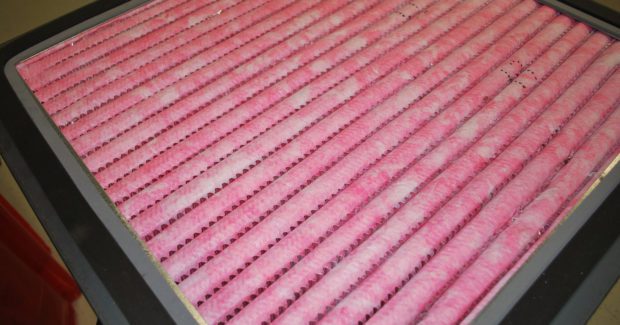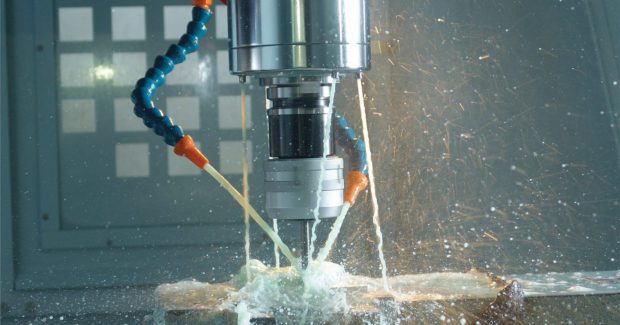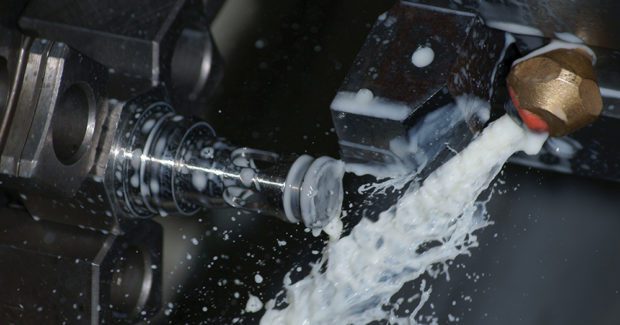A Sticky Situation: Four Mistakes in Oil Mist Extraction
Coolants and lubricating fluids are essential to metalworking operations. But if they are allowed to accumulate in the air, they can become a significant health and safety hazard. What can you do to minimize your risks?
Posted: July 26, 2016
Coolants and lubricating fluids are essential to many metalworking processes. But if they are allowed to accumulate in the air, they can become a significant health and safety hazard. What can you do to minimize your risks? Many shops are using less-than-optimal approaches to oil mist extraction. Here are the top four mistakes – and what you should be doing differently.
MISTAKE #1: TREATING OIL MISTS LIKE DUST
Oil mists and solid particulates behave totally differently and require different approaches to collection. While weld fumes and oil mist smoke may produce a similar haze in the air, one is made up of tiny solid particles and the other is made up of tiny liquid droplets. Dust collection equipment made for weld fumes and other solid particulates will not be effective against oil mists.
The biggest difference is in the filter media. Filter media made for weld fume or dust particles will absorb the liquid oil mists and expand, quickly becoming saturated and ineffective for both oil and dry particulate. Oil mist filters are designed to capture tiny droplets on the fibrous media, which then coalesce into larger droplets. When enough liquid accumulates, it simply drains off of the filter media into a collector. The more liquid you have, the more effective the filter is, because it actually cleans itself as liquid flows off the surface. Packed bed filters, also called coalescing filters, are the most effective filters for most oil mists. These filters are some of the most efficient filters for mist control available, approaching 99.5 percent collection efficiency on 0.3 micron particle sizes. They continue to work even when fully saturated, so they have a long life compared to typical filter media, often up to two or three years.
https://youtu.be/Q6UNstI3LEI
MISTAKE #2: ASSUMING ALL OIL MISTS ARE THE SAME
When designing an oil mist extraction system, it’s important to understand what kind of oil mists you are working with. Different types of lubricants (e.g. oil-based vs. water-based) may require different kinds of filter media. But the most important distinction to understand is whether your mists are mechanically or thermally generated. Mechanically generated mists are usually around ten microns in diameter. These mists are generated by processes that do not generate excessive heat, like metalworking lathes. They are relatively easy to capture due to their large size. Thermally generated mists are submicron: ten to one hundred times smaller than mechanically generated droplets. This oil mist usually looks like a smoke and is much harder to filter. Typical applications are wet grinding, hot forging and oil quenching.
Most inexpensive oil mist control systems on the market are aimed at mechanical oil mist collection. Membrane-based collectors (which use a disposable fiberglass membrane filter) and centrifugal mist collectors can remove up to 80 percent of mechanically generated mists. However, the vast majority of industrial processes today are more likely to create thermally-generated mists. High speed applications that accelerate production rates also produce more heat, which results in a thermal-generated oil smoke rather than those easy-to-collect larger droplets. The submicron particles that are generated by thermal processes are so small that they go right through typical membrane collectors. Centrifugal collectors may actually make the problem worse by breaking down tiny droplets into even smaller ones. While the air coming out the other side may look clear, it is probably full of invisible oil mist particles – often at nearly the same saturation levels that went into the collector.
Testing the air that goes into and comes out of your collector is the best way to determine whether or not your system is working. Packed bed filters, with multiple layers of tightly woven fibers, work well for both mechanically and thermally generated oil mists.
MISTAKE #3: ALLOWING NON-SOLUBLE PARTICULATES TO CLOG THE OIL FILTER
Packed-bed filters can handle some dry soluble particulate – it will simply wash away with the liquid as it coalesces. However, if your process generates large amounts of non-soluble particles that mix with oil mists in the air, you may need to consider a pre-filtering process. There are different approaches to separating solid particulates and liquid oil mists:
- Disposable pre-filters can be used to strain out large solids before the oil mist reaches the packed-bed filter. This is a fairly cheap approach but can be maintenance intensive, as filters need to be changed frequently.
- Impingement plates or chevron-style pre-filters capture solids and keep them from entering the fiber bed filter. These are periodically washed down to remove accumulated solids.
The best system for you depends on the volume and size of solid particulates produced in your application.
MISTAKE #4: IGNORING THE TOTAL SYSTEM
Effective oil mist control depends not just on the collector and filter media, but on the total system design. Your oil mist extraction system consists of:
- The collector and filter media
- The fan
- The ductwork
- The hood
Good system design starts with an effective hood to capture and contain the oil mists. The better your hood design, the less airflow you will need to capture your oil mists and the less energy you will use. An optimal system design will minimize static pressure so you can move more air with less energy. Ductwork design is also important. Improper duct design and inadequate airflow can allow mists to coalesce on the sides and bottom of the ducts. For some types of lubricants, this can be a fire hazard. If liquids accumulate in the ductwork and drip from the seams, it can create a significant safety hazard.
You also have to be aware of environmental factors such as humidity. The higher the humidity level in the plant, the less effective your air quality equipment will be. At the same time, uncontrolled oil mists will add to the humidity in the air. You want your oil mist control system to get as much liquid out of the air as possible on the first pass, so you don’t find that you also need a dehumidifier as a secondary oil mist collector. An air quality systems engineer familiar with oil mist applications will be able to help you determine the best system approach for your needs. Understanding your oil mists will help you choose the most effective and efficient solution.







